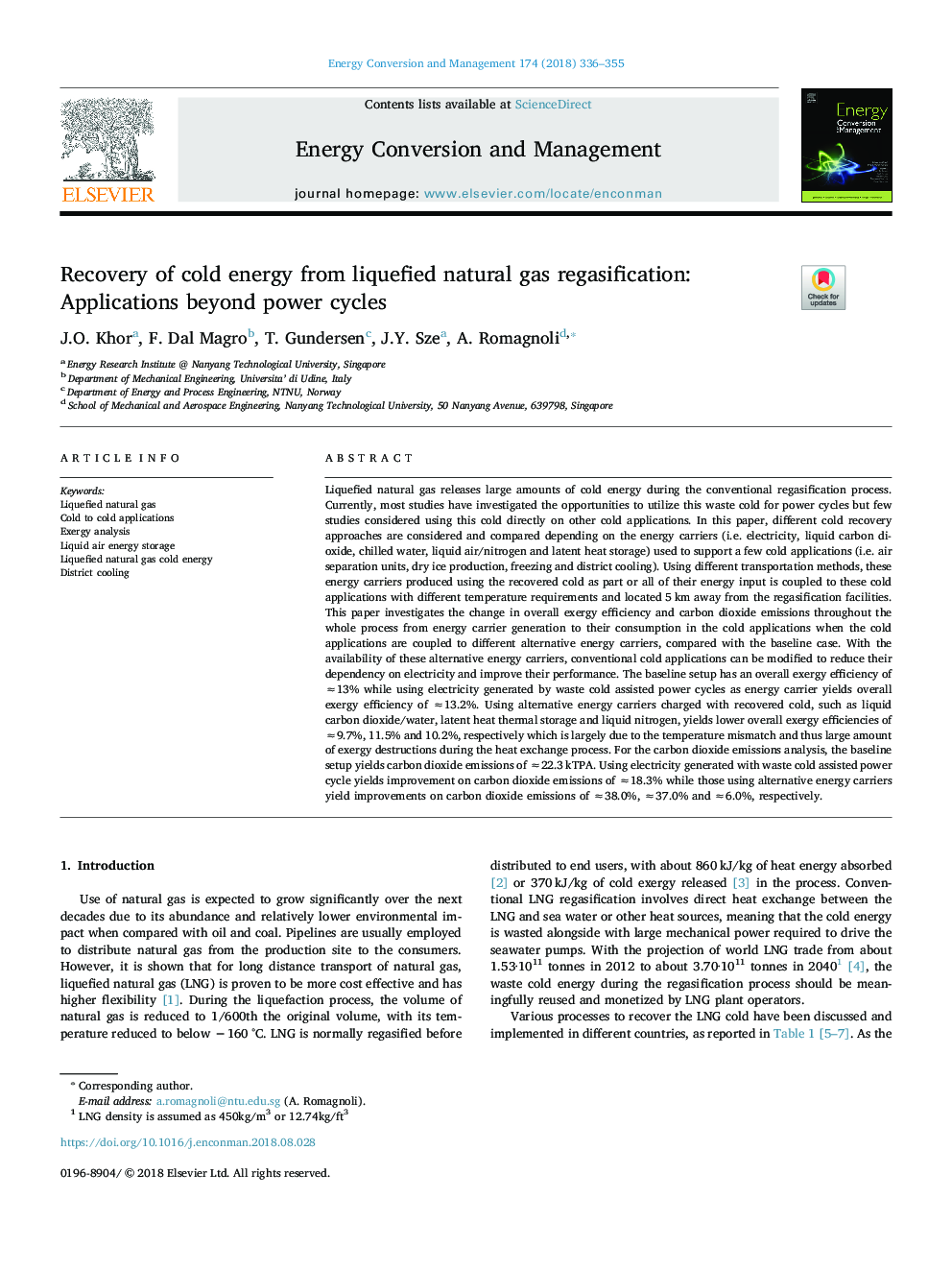| کد مقاله | کد نشریه | سال انتشار | مقاله انگلیسی | نسخه تمام متن |
|---|---|---|---|---|
| 7157759 | 1462788 | 2018 | 20 صفحه PDF | دانلود رایگان |
عنوان انگلیسی مقاله ISI
Recovery of cold energy from liquefied natural gas regasification: Applications beyond power cycles
ترجمه فارسی عنوان
بازیابی انرژی سرد از گاز مجاز گاز طبیعی مایع: برنامه های کاربردی فراتر از چرخه های قدرت
دانلود مقاله + سفارش ترجمه
دانلود مقاله ISI انگلیسی
رایگان برای ایرانیان
کلمات کلیدی
گاز طبیعی مایع، کاربردهای سرد و سرد، تجزیه و تحلیل اگزرژی، ذخیره انرژی مایع هوا، انرژی سرد با گاز طبیعی مایع، خنک کننده محدوده
موضوعات مرتبط
مهندسی و علوم پایه
مهندسی انرژی
انرژی (عمومی)
چکیده انگلیسی
Liquefied natural gas releases large amounts of cold energy during the conventional regasification process. Currently, most studies have investigated the opportunities to utilize this waste cold for power cycles but few studies considered using this cold directly on other cold applications. In this paper, different cold recovery approaches are considered and compared depending on the energy carriers (i.e. electricity, liquid carbon dioxide, chilled water, liquid air/nitrogen and latent heat storage) used to support a few cold applications (i.e. air separation units, dry ice production, freezing and district cooling). Using different transportation methods, these energy carriers produced using the recovered cold as part or all of their energy input is coupled to these cold applications with different temperature requirements and located 5â¯km away from the regasification facilities. This paper investigates the change in overall exergy efficiency and carbon dioxide emissions throughout the whole process from energy carrier generation to their consumption in the cold applications when the cold applications are coupled to different alternative energy carriers, compared with the baseline case. With the availability of these alternative energy carriers, conventional cold applications can be modified to reduce their dependency on electricity and improve their performance. The baseline setup has an overall exergy efficiency of â13% while using electricity generated by waste cold assisted power cycles as energy carrier yields overall exergy efficiency of â13.2%. Using alternative energy carriers charged with recovered cold, such as liquid carbon dioxide/water, latent heat thermal storage and liquid nitrogen, yields lower overall exergy efficiencies of â9.7%, 11.5% and 10.2%, respectively which is largely due to the temperature mismatch and thus large amount of exergy destructions during the heat exchange process. For the carbon dioxide emissions analysis, the baseline setup yields carbon dioxide emissions of â22.3â¯kTPA. Using electricity generated with waste cold assisted power cycle yields improvement on carbon dioxide emissions of â18.3% while those using alternative energy carriers yield improvements on carbon dioxide emissions of â38.0%, â37.0% and â6.0%, respectively.
ناشر
Database: Elsevier - ScienceDirect (ساینس دایرکت)
Journal: Energy Conversion and Management - Volume 174, 15 October 2018, Pages 336-355
Journal: Energy Conversion and Management - Volume 174, 15 October 2018, Pages 336-355
نویسندگان
J.O. Khor, F. Dal Magro, T. Gundersen, J.Y. Sze, A. Romagnoli,
